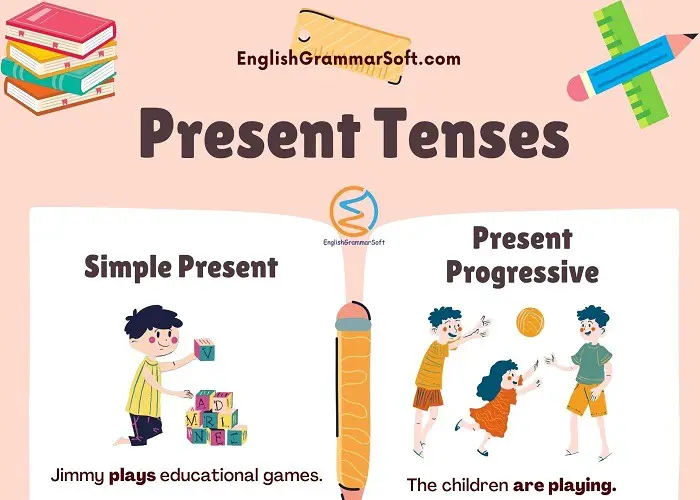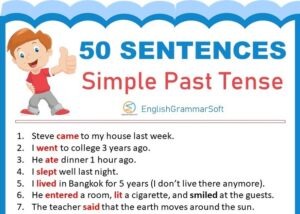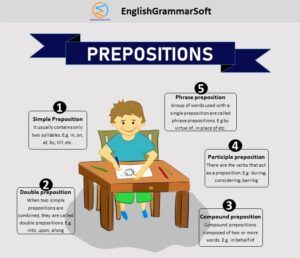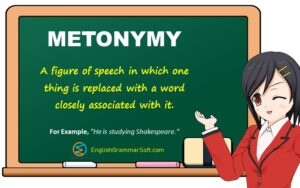Present Tenses in English (Examples & Structure)
Present tense is a grammatical tense whose main function is to locate an event or action in “the present”, which is understood as the time of speech. The present tense is used to describe generally or always true facts, or things that are the case at present.
There are four present tenses in English: present simple, present continuous, present perfect, and present perfect continuous. Each of these present tenses has a different function, structure and is used in different situations. Here’s a closer look at each one:
Types of Present Tenses
There are four present tenses in English: the present simple, the present continuous or progressive, present perfect and present perfect continuous.
The simple present is used to describe an ongoing action, or a habitual action in the present (I go, I walk). The continuous present is used to show an action that is in progress (I am walking, I am running). The perfect simple present is used to express an action that has been completed, but still has effects on the present (I have walked, I have run). The perfect continuous present is used to show an action that has been completed but still has effects on the present (I have been walking, I have been running).
Examples with the same sentence
- Simple present (e.g., “I eat”)
- Present progressive or continuous (e.g., “I am eating”)
- Present Perfect (e.g., “I have eaten”)
- Present Perfect Continuous (e.g., “I have been eating”)
What is Simple Present?
The simple present is a verb tense that indicates an action is happening now, or that it happens regularly (or unceasingly, which is why it’s sometimes called present indefinite).
The simple present tense is formed by base form or the word ‘to be’ (am, are, is) followed by the base form of a verb. For example:
- I am a teacher. (my profession)
- You are my friend. (your profession)
Structure of Simple Present Tense
To form the simple present tense, use this structure:
Subject + base form of verb (+s/es)
In English grammar, the simple present tense is made up of three elements: subject, base form of the verb, and the -s ending and third person singular marker (-s or -es).
The base form refers to the dictionary form of a verb. For example, the base form of the verb “to write” is simply “write.”
| Simple Present Tense | Structure | Example |
|---|---|---|
| Affirmative Singular* | Subject + base form(+s/es) | He/She plays soccer. |
| Plural | Subject + base form | We/You/They play soccer. |
| Negative Singular | Subject + does not + base form | He/She does not play soccer. |
| Plural | Subject + do not + base form | We/You/They do not play soccer. |
| Interrogative Singular | Does + subject + base form + ? | Does he/she play soccer? |
| Plural | Do + subject + base form + ? | Do we/you/they play soccer? |
- Here singular means “third person singular”
- “I” is singular subject (first person singular, not third person singular) but the structure will be same as used in plural subject. (I play soccer, I do not play soccer, Do I play soccer?).
Where Simple Present Tense is Used?
The simple present tense can be used in the following situations:
- To talk about habits and routines (Example: I go to the gym every morning.)
- To talk about schedules or arrangements (Example: I get up at 6 am every day.)
- To talk about facts, e.g., dates, numbers, or existing conditions (Example: It’s Monday today.)
- To talk about what someone likes doing or what they usually do on Sundays, holidays etc., e.g., (Example: I usually go swimming on Sundays after lunch.)
- To talk about things that happen regularly in the future (Example: My mother always gets up early on Saturdays because she likes gardening in her greenhouse before breakfast.)
10 Example of Simple Present Tense
- I brush my teeth twice a day.
- The children watch television every evening after dinner.
- She doesn’t like to eat meat.
- My parents live in New York City, but I live in Chicago now.
- Tom plays soccer on Saturdays.
- I usually have a lot of homework to do on Sundays.
- I always clean my room before going to bed on Saturday nights.
- We talk loudly whenever we are excited about something.
- Dogs wag their tails when they are happy.
- She always tells me what to do.
- Cats eat mice, not dog food!
What is present continuous (progressive)?
The present continuous or progressive is used to describe actions that are currently in progress. It is typically formed by combining the present tense of the verb “to be” with the present participle of the main verb (e.g., am writing, are eating, is running).
- The are studying together.
- They are playing soccer.
- I am going to the store later.
Structure of Present Continuous (Progressive)
To form present continuous tense, use this structure:
Subject + is/am/are + present participle
| Present Continuous Tense | Structure | Example |
|---|---|---|
| Affirmative Singular | Subject + is + present participle | He/She is playing soccer. |
| Plural | Subject + am + present participle Subject + are + present participle | I am playing soccer. We/You/They are playing soccer. |
| Negative Singular | Subject + is not + present participle | He/She is not playing soccer. |
| Plural | Subject + am not+ present participle Subject + are not+ present participle | I am not playing soccer. We/You/They are not playing soccer. |
| Interrogative Singular | Is + subject + present participle+? | Is he/she playing soccer? |
| Plural | Am + subject + present participle+? Are + subject + present participle+? | Am I playing soccer? Are we/you/they playing soccer? |
You can read here “why I take plural verbs”.
When is Present Continuous Tense Used?
Present continuous tense is used for the following:
- To describe an action that is happening at the moment of speaking; for example, “I am drying my hair.”
- With the present participle to describe a habit; for example, “I’m in the habit of always being careful when I drive.”
- Present continuous tense is used to describe actions which are happening at the moment of speaking. It can also be used to talk about future plans, or things that will happen in the future; for example, I’m going to write a letter later this afternoon.
10 Example of Present Continuous Tense
- I am studying for my test right now.
- Sarah is cooking dinner for us.
- Tom is not washing his car at the moment.
- The baby is sleeping soundly in her crib.
- We are meeting with our boss.
- They are having a party with friends.
- He is taking his dog for a walk right now.
- I am meeting my friend for lunch.
- She is going to the store to buy some groceries.
- She is writing a book about her life.
- Are you listening to me? I am trying to talk to you!
What is present perfect?
The present perfect is a verb tense which is used to show that an action has been completed in the past, but its effects are still relevant in the present. It is often used to talk about experiences or changes which have taken place over a period of time. For example:
- I’ve worked here for three years. (The present perfect shows that my work experience is relevant now.)
- We’ve lived in this city for ten years. (The present perfect shows that our length of residence is relevant now.)
- She’s written two novels. (The present perfect shows that her writing is relevant now.)
Structure of Present Perfect Tense
To form the present perfect tense, use this structure:
Subject + has/have + past participle
| Present Perfect Tense | Structure | Example |
|---|---|---|
| Affirmative Singular | Subject + has + past participle | He/She has played soccer. |
| Plural | Subject + have + past participle | I/We/You/They have played soccer. |
| Negative Singular | Subject + has not + past participle | He/She has not played soccer. |
| Plural | Subject + have not + past participle | I/We/You/They have not played soccer. |
| Interrogative Singular | Has + subject + past participle+? | Has he/she played soccer? |
| Plural | Have + subject + past participle+? | Have I/we/you/they played soccer? |
Where Present Perfect Tense is Used?
It is be used to show that something has been happening for some time, but not yet finished.
Here are some examples of the present perfect tense:
- He has lived here all his life.
- I have known him since I was five years old. (The speaker has known this person for a long time.)
- He has lived here all his life, so he knows everyone in town. (The speaker is talking about the past and current state.)
- I have known him since I was five years old, so I know what he’s like now, too. (Compound actions of present and past)
10 Example of Present Perfect Tense
- I have worked at this company for three years.
- We have lived in this house for five years.
- She has been married for ten years.
- I haven’t seen him since last week.
- Have you read that book?
- He has worked as a chef for 5 years.
- Have you ever heard of the Beatles?
- You have gone to London many times.
- He has never seen this movie before.
- We have never been to Paris before, but we hope to go soon!
What is Present Perfect Continuous (Progressive)?
The present perfect continuous (progressive) is a verb tense that combines the perfect aspect with the progressive aspect. It’s used to describe ongoing or repeated actions that began in the past and continue into the present. For example, “I have been studying French for two years.”
The present perfect progressive is made up of two parts: the present tense of the verb “to have” (have/has been) and the present participle of the main verb (studying/working/running, etc.). Together, these create the meaning of an action that started in the past and is still happening in the present.
Structure of Present Perfect Continuous Tense
See below the structure of present perfect continuous tense
Subject + has/have been + present participle
| Present Perfect Continuous Tense | Structure | Example |
|---|---|---|
| Affirmative Singular | Subject + has been+ present participle | He/She has been playing soccer for two hours. |
| Plural | Subject + have been + present participle | I/We/You/They have been playing soccer for two hours. |
| Negative Singular | Subject + has not been+ present participle | He/She has not been playing soccer for two hours. |
| Plural | Subject + have not been + present participle | We/You/They have not been playing soccer for two hours. |
| Interrogative Singular | Has + subject + been+ present participle + ? | Has he/she been playing soccer for two hours? |
| Plural | Have + subject + been+ present participle + ? | Have we/you/they been playing soccer for two hours? |
Where we use present perfect continuous tense?
Present Perfect Continuous Tense is used for a period of time that began in the past and continues until now. It is a compound tense which consists of present participle of the verb and the auxiliary verb have/has + been.
- The train has been running late for two hours. (It does not matter if it started late or not.)
- I have been waiting for two hours. (The speaker is emphasizing the duration of their waiting.)
- I have been living in New York for three years. (This sentence means I have been living here for three years, but I am not living here now.)
- I have been thinking about you all day long! (This sentence means I have been thinking about you since morning till evening)
The present perfect progressive is also used to describe actions that began in the past and are still happening, or actions that began in the past and have recently stopped. It is often used with time expressions such as “for,” “since,” “all day,” and “so far.”
10 Example of Present Perfect Continuous Tense
- I have been studying French for two years.
- She has been working at the same company for ten years.
- We have been waiting for an hour.
- They have been playing tennis since 9:00 a.m.
- I have been feeling sick all day.
- He has been trying to reach you since this morning.
- You have not been paying attention so far.
- They have been living in that house since 2009.
- I have been feeling sick all day.
- What have you been doing so far?
- You have not been paying attention so far.
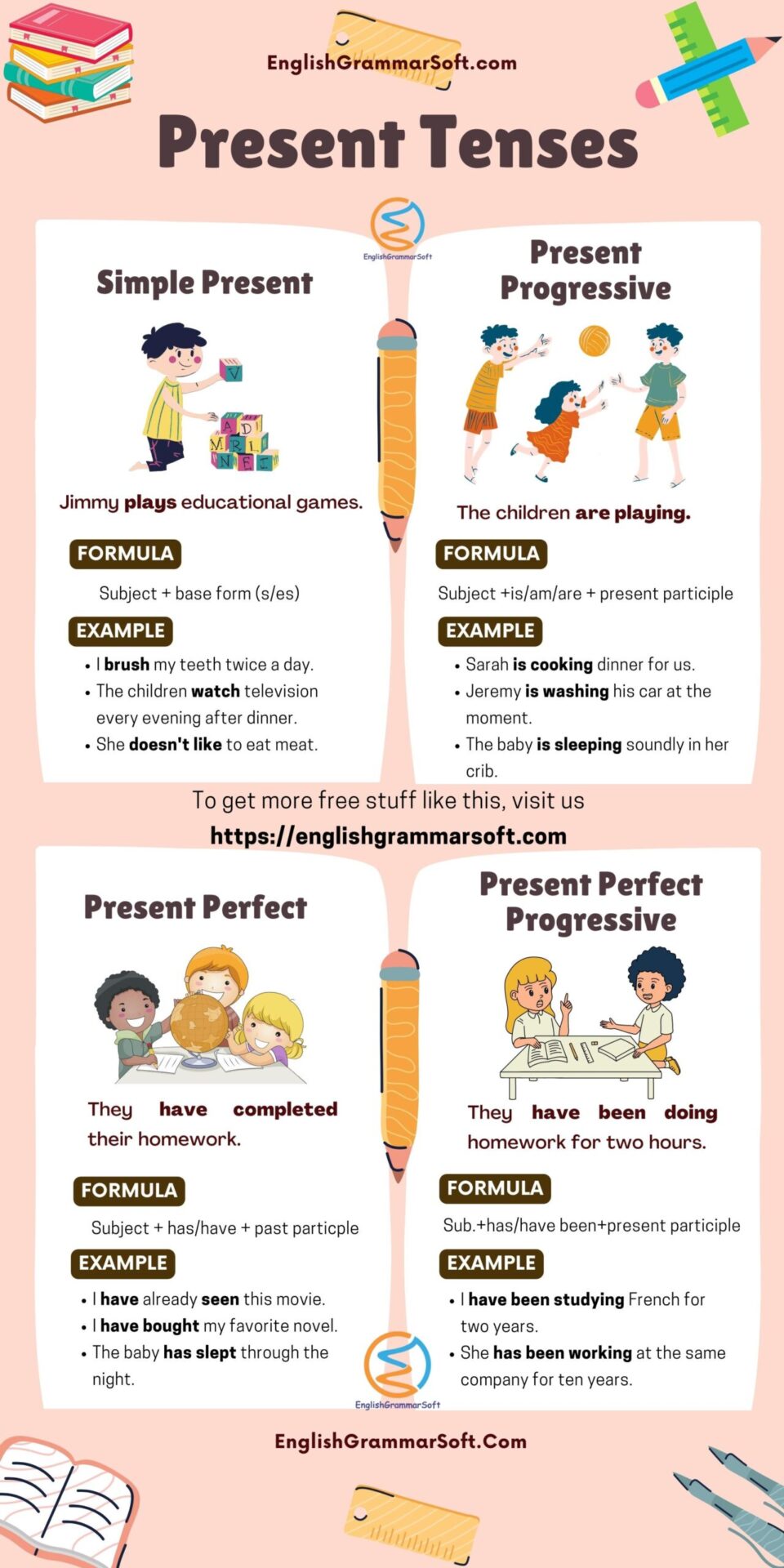
Read more
- Simple Present Tense Sentences
- Simple Present Tense Worksheet
- Present Continuous Tense Sentences
- Present Continuous Tense Worksheet
- Present Perfect Tense Sentences
- Present Perfect Tense Worksheet
- Present Perfect Continuous Tense Sentences
- Present Perfect Continuous Tense Worksheet
- Tenses Chart
